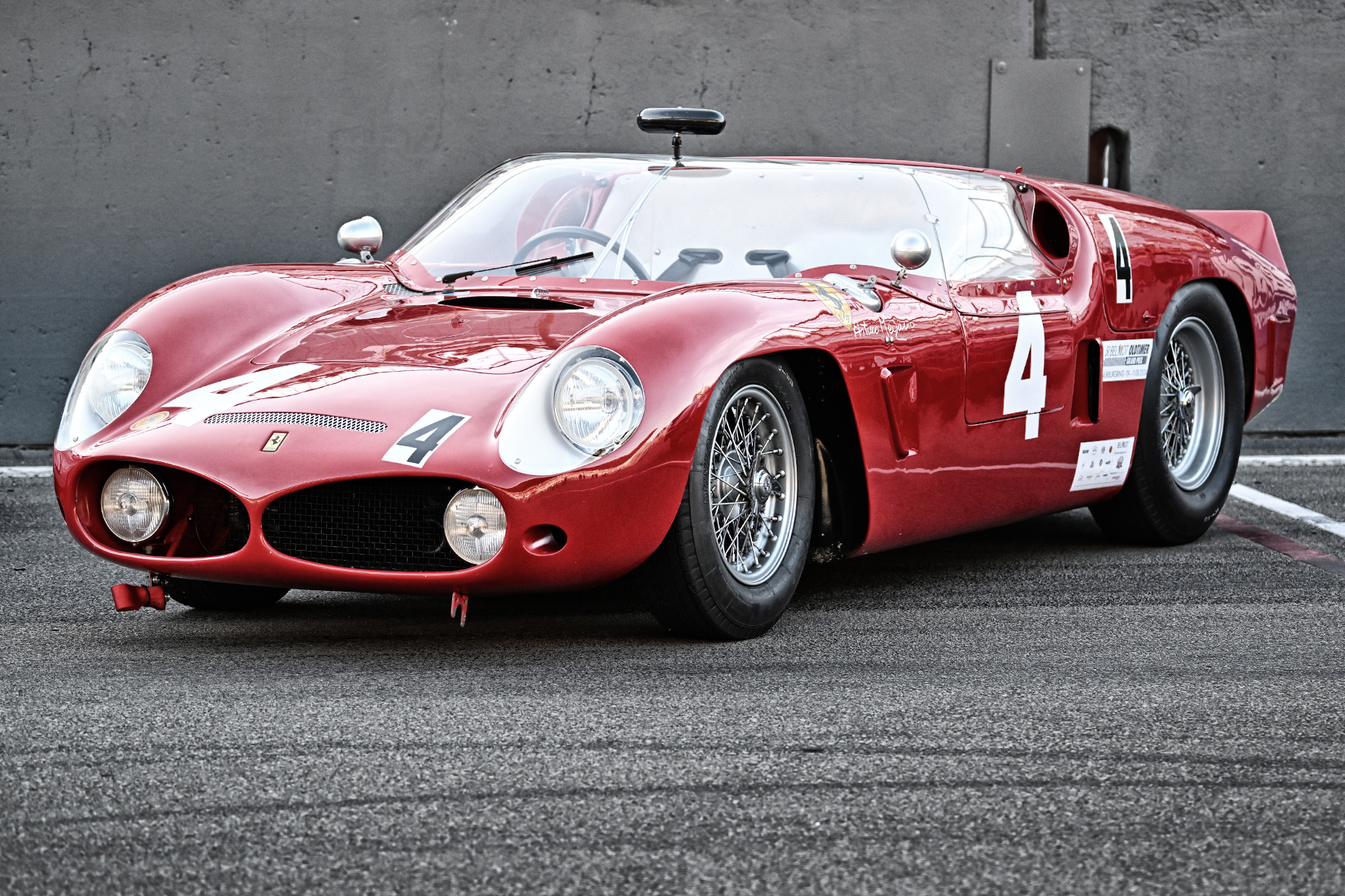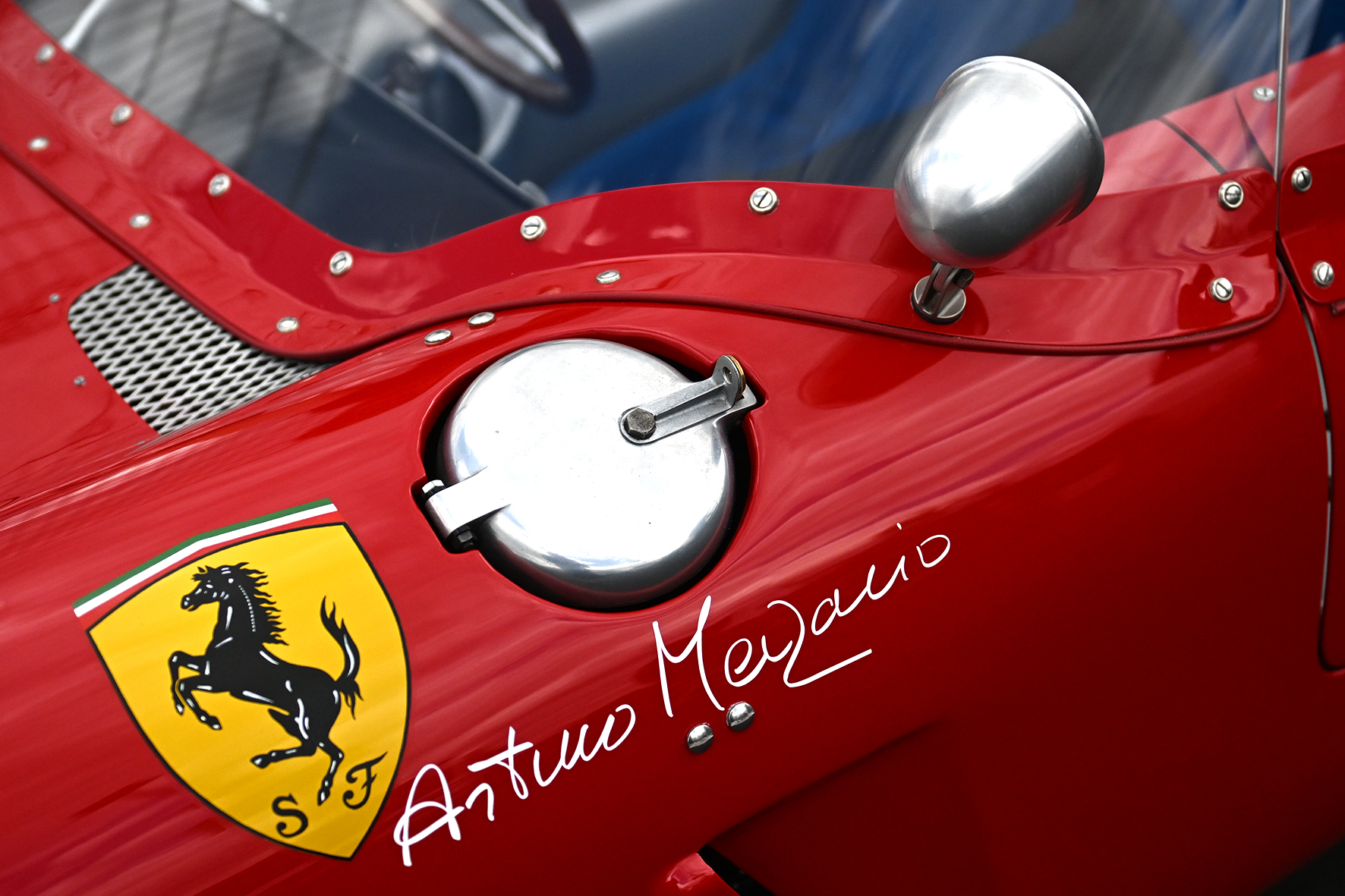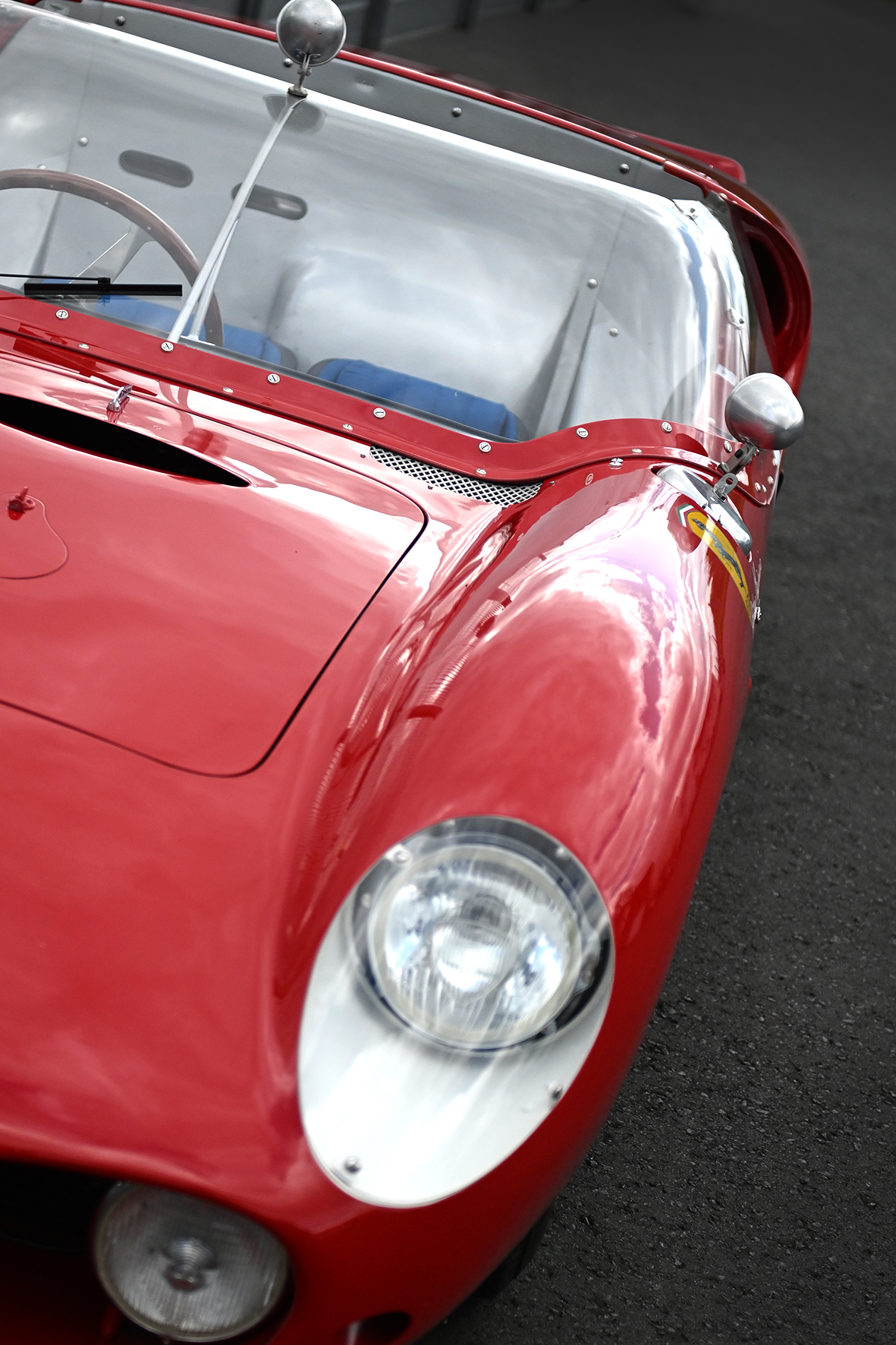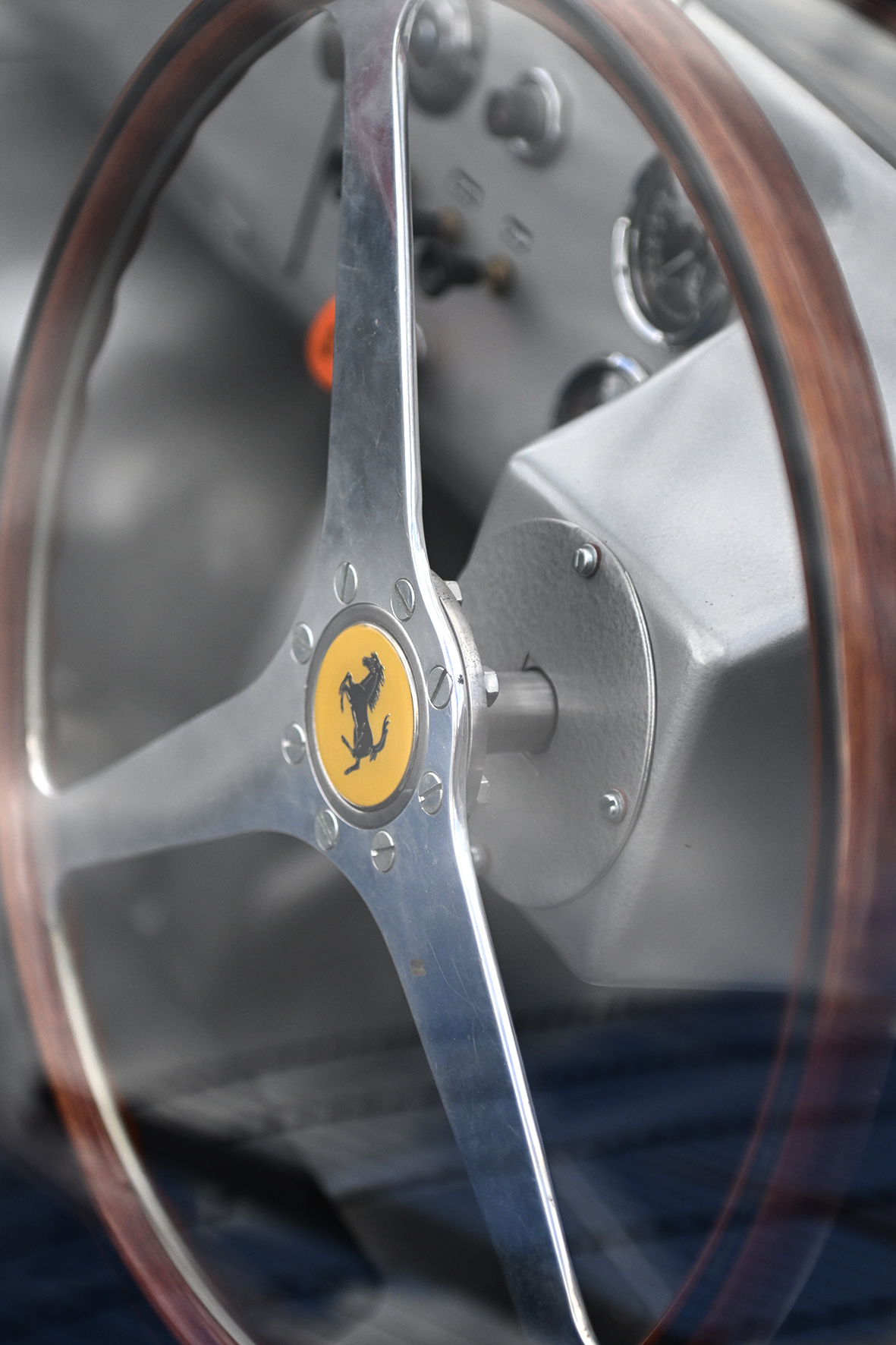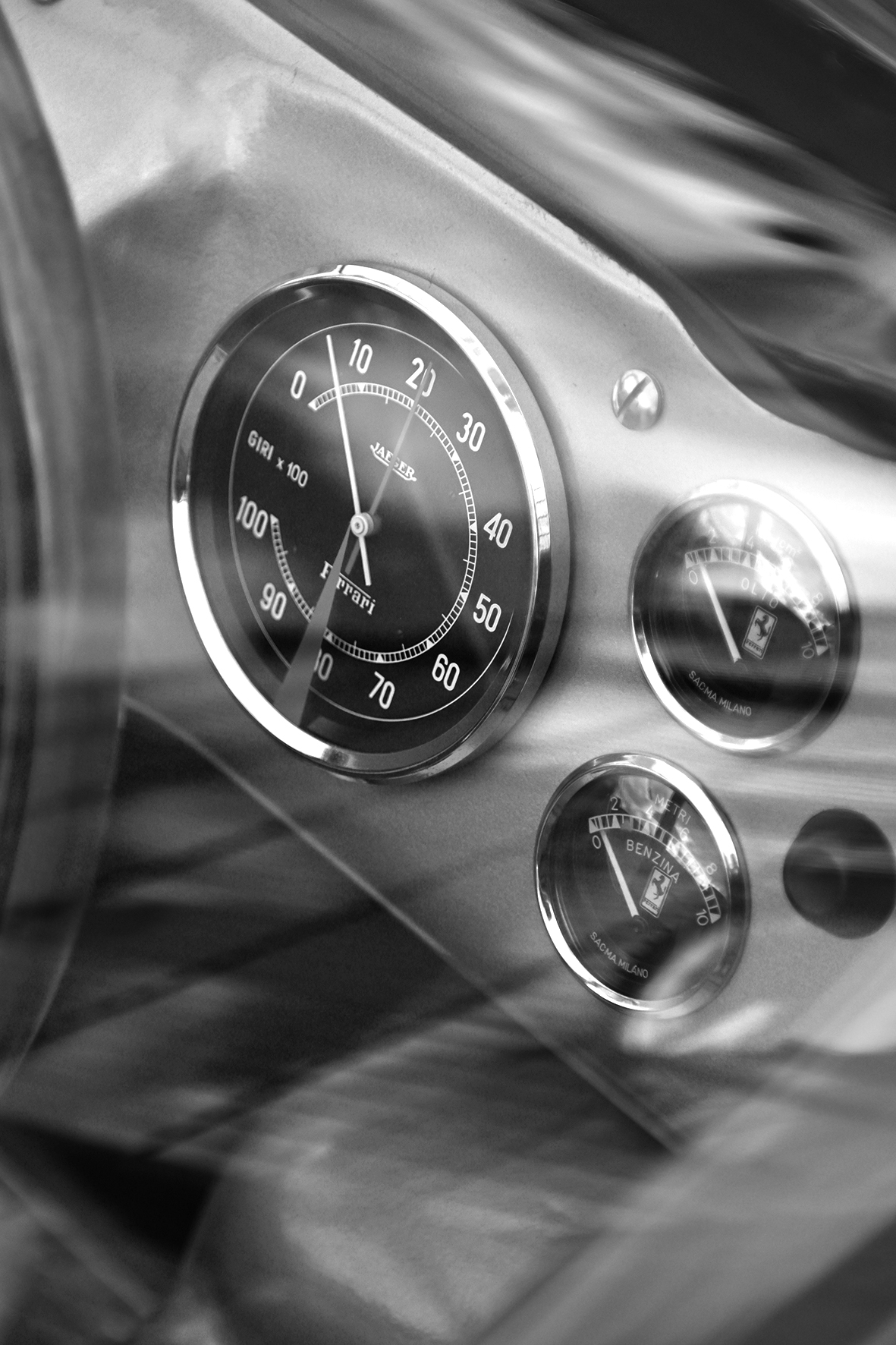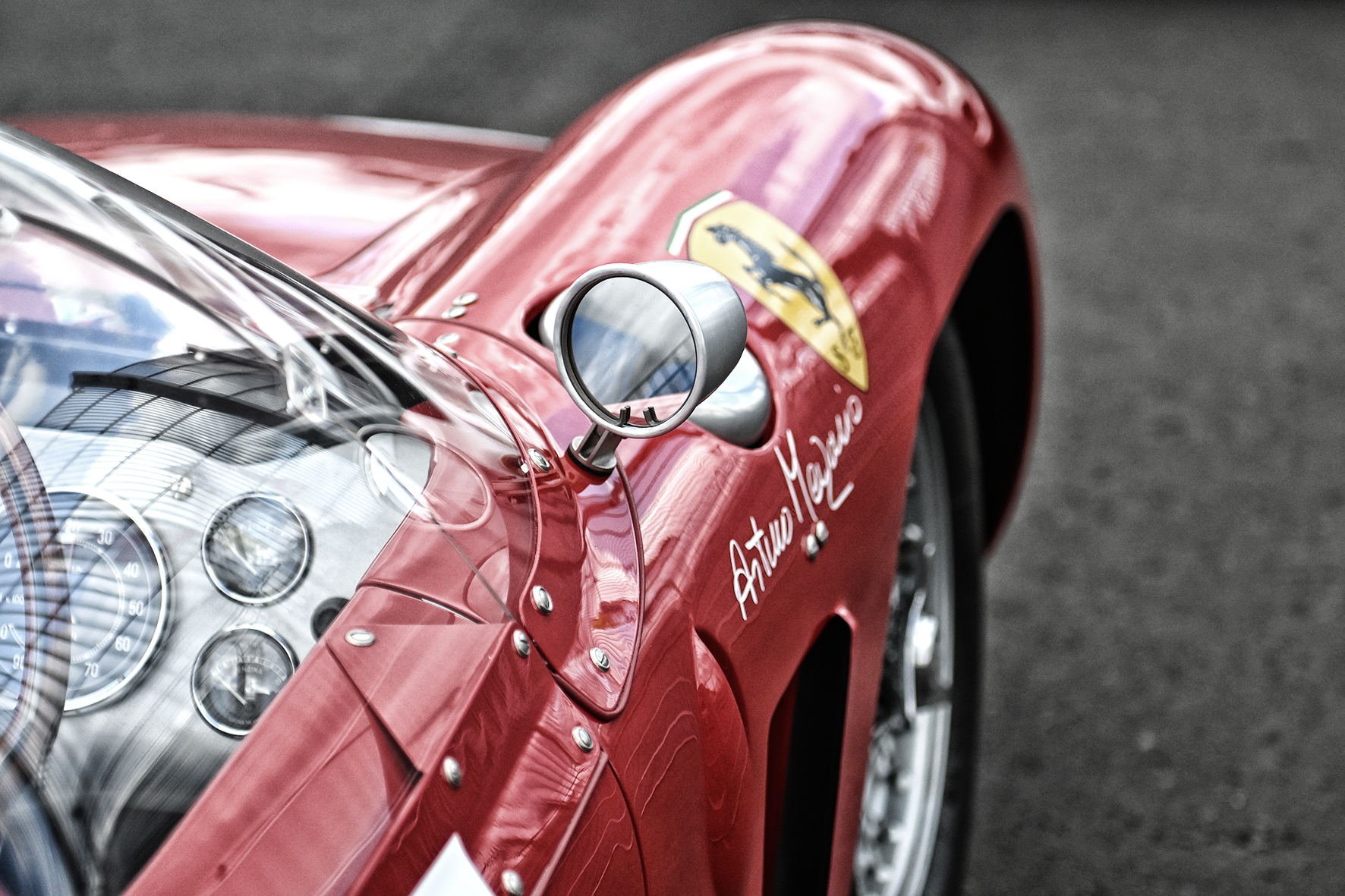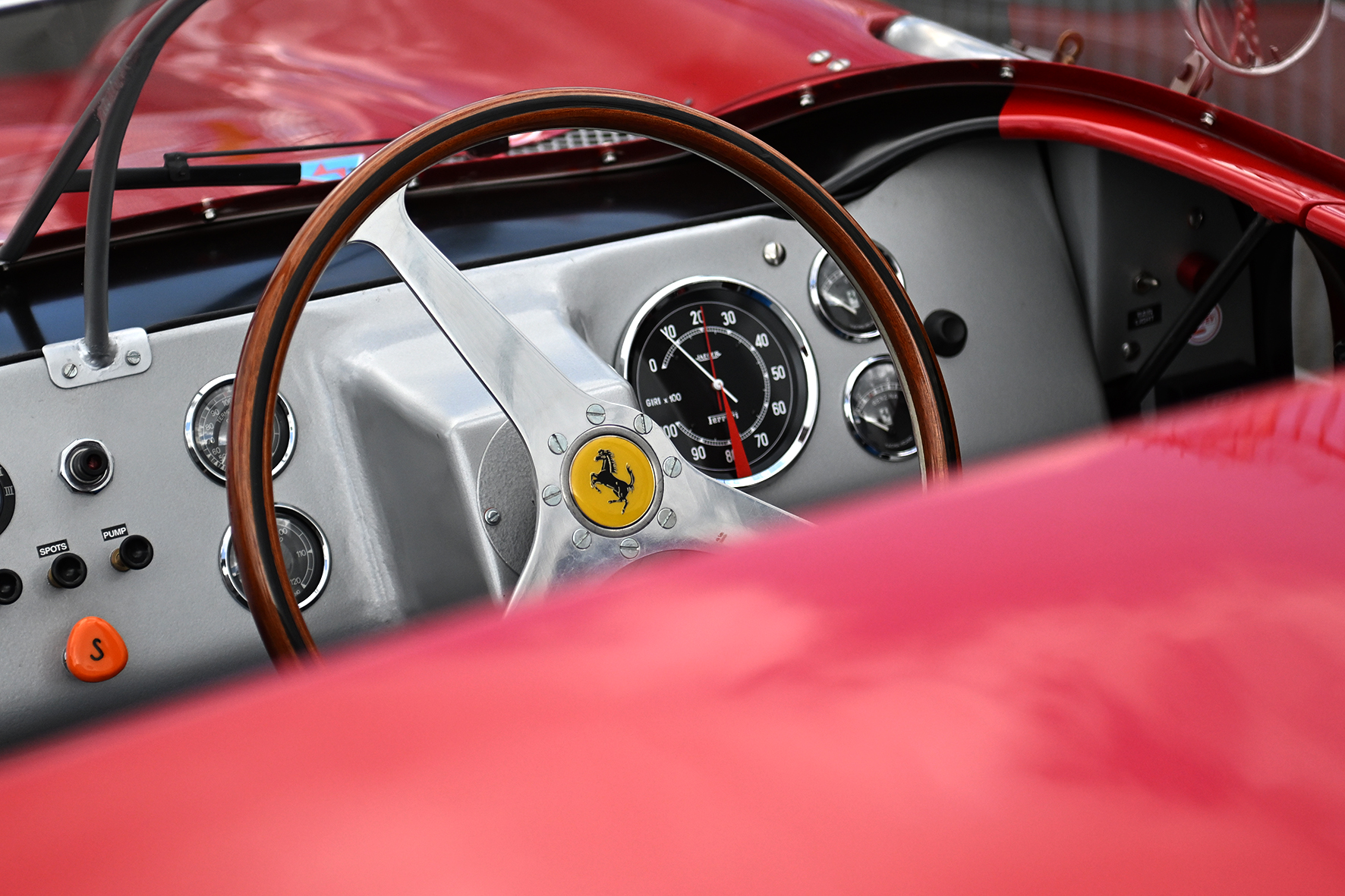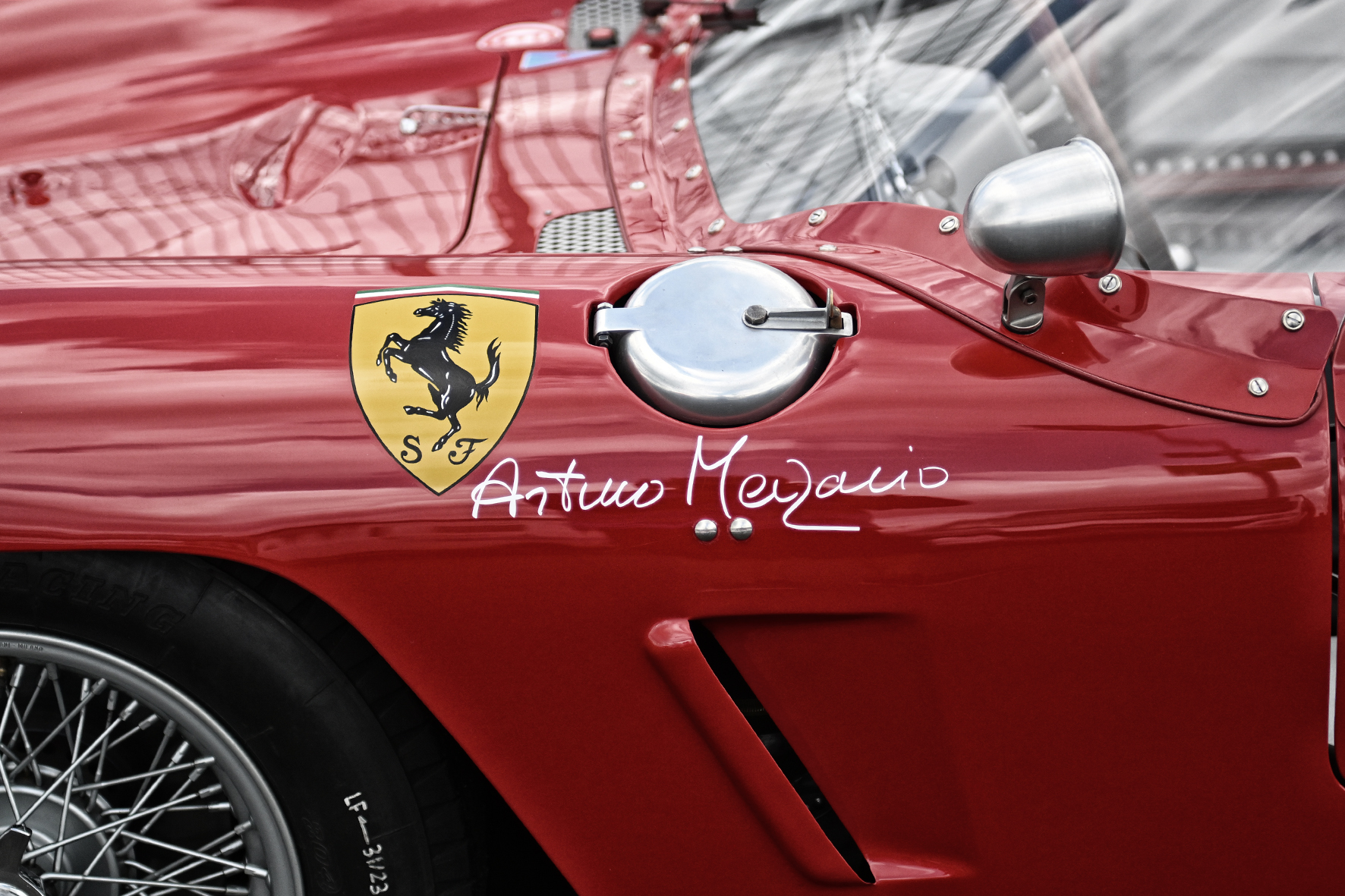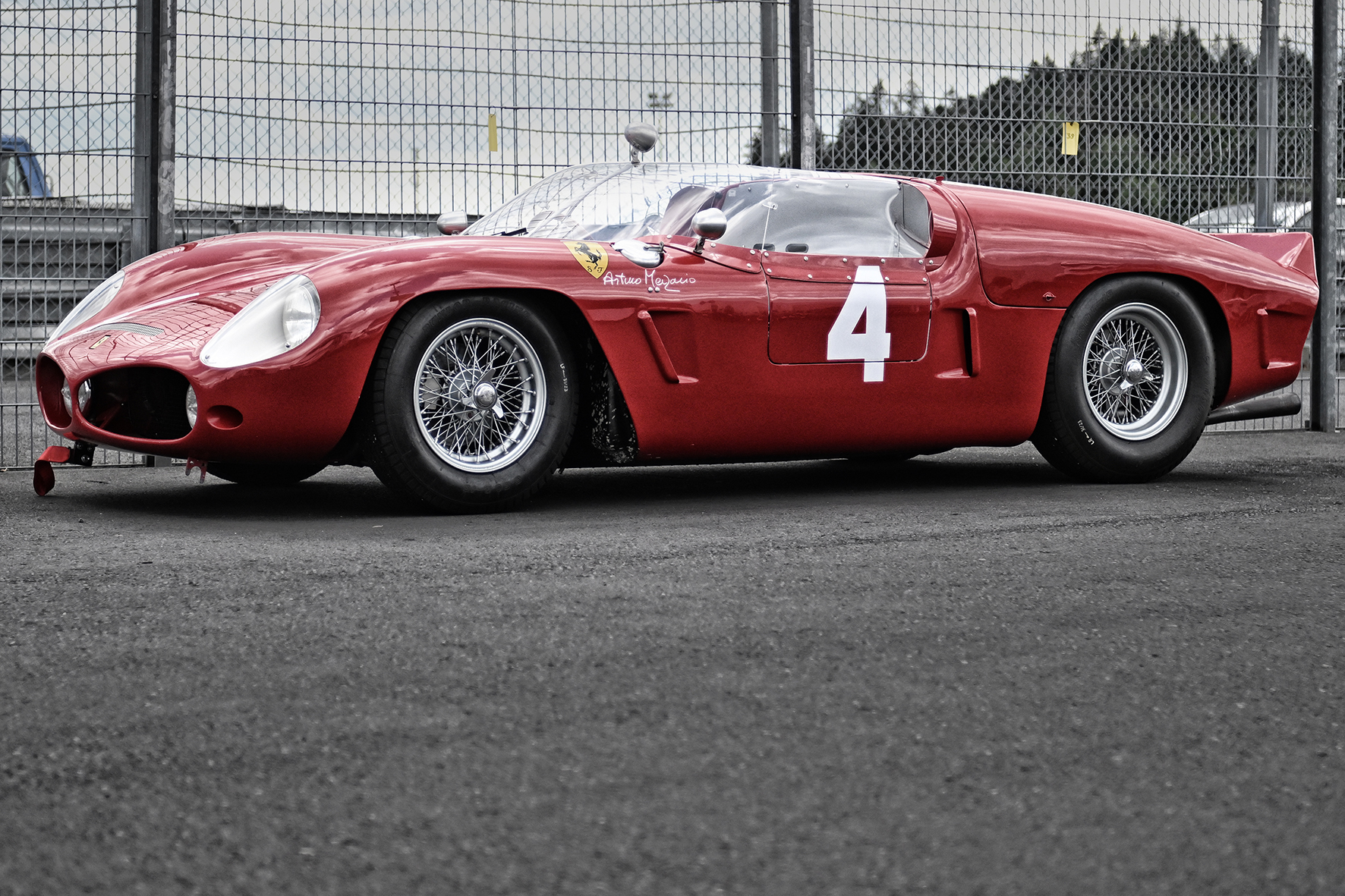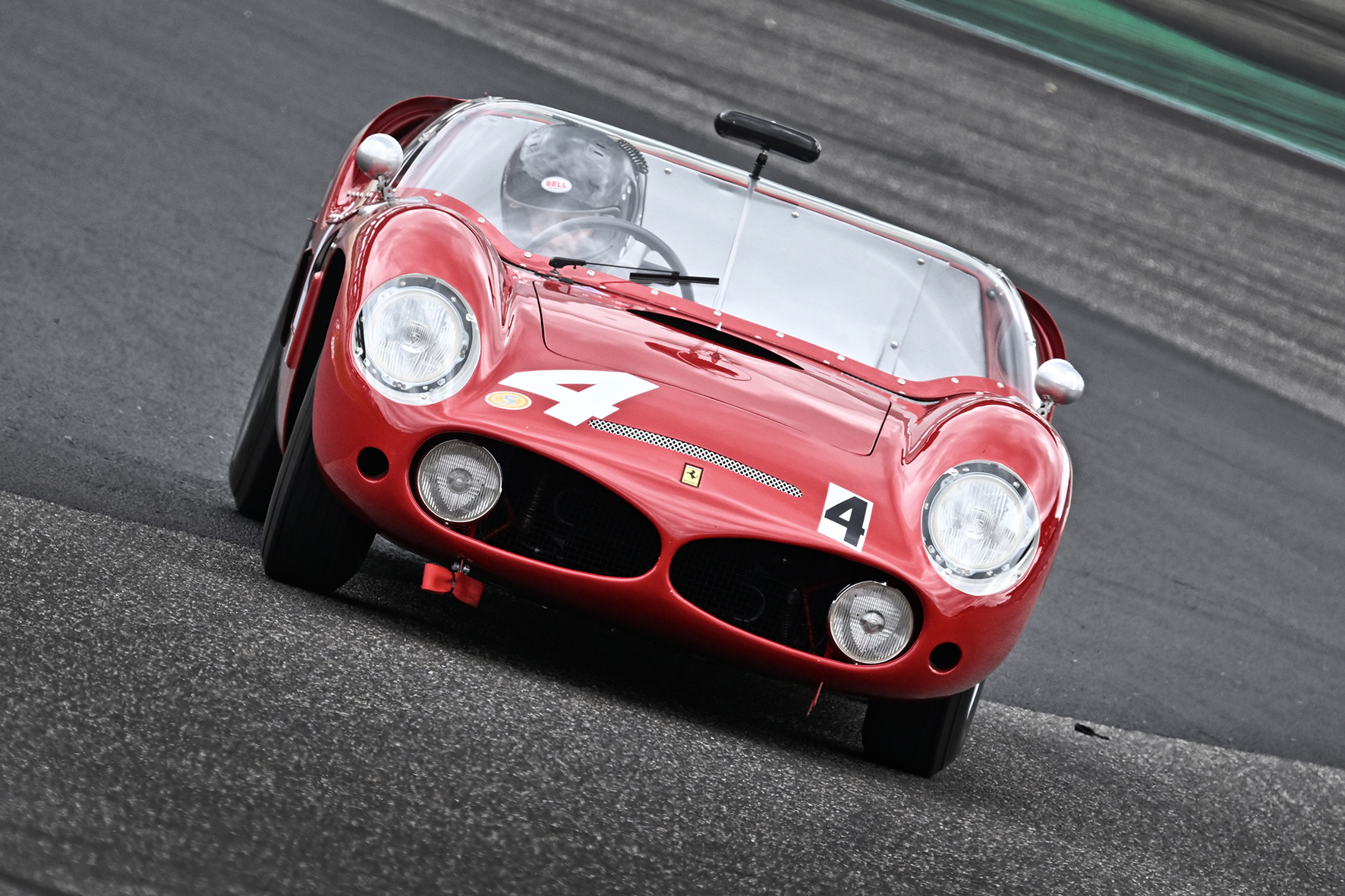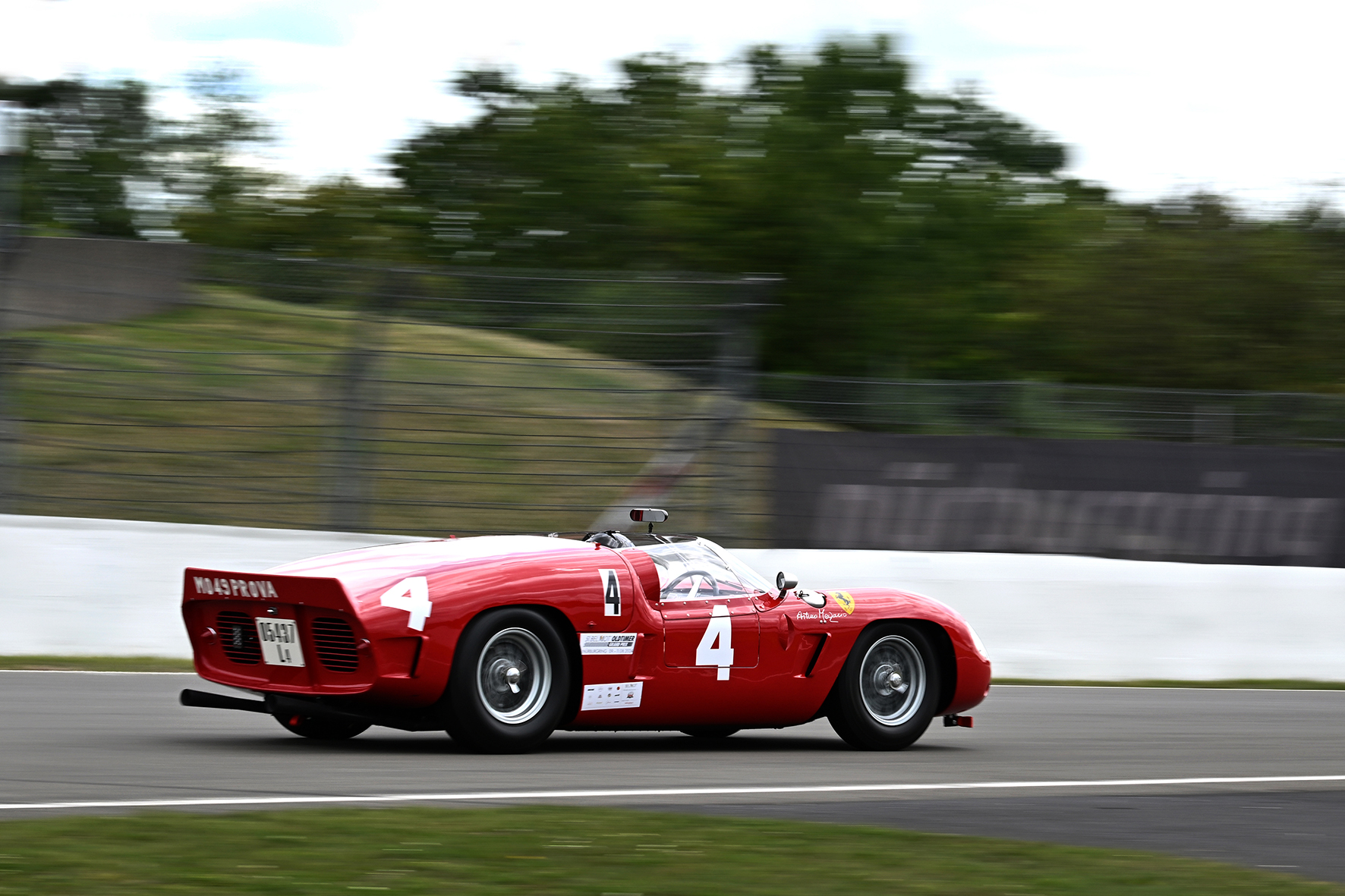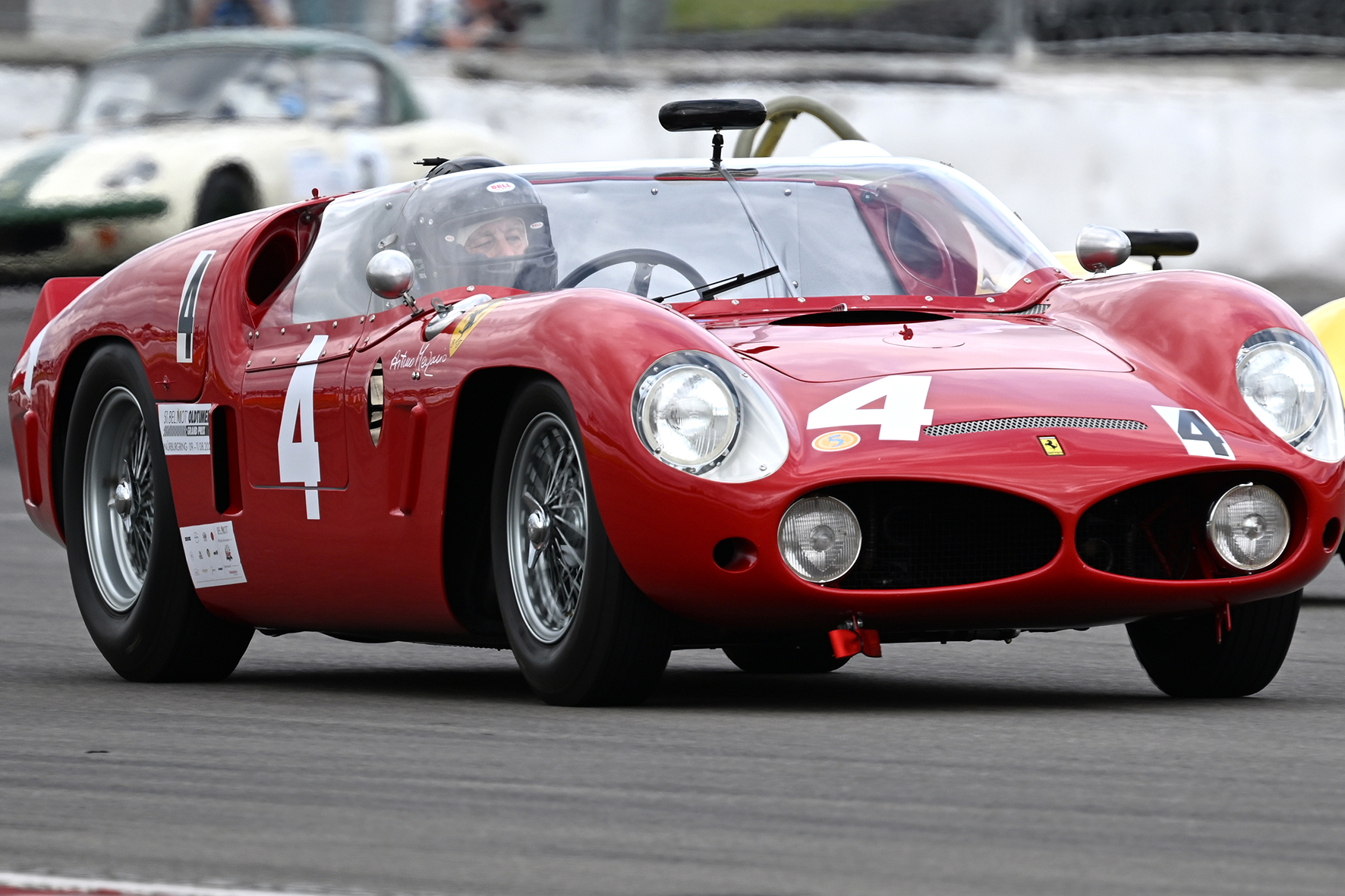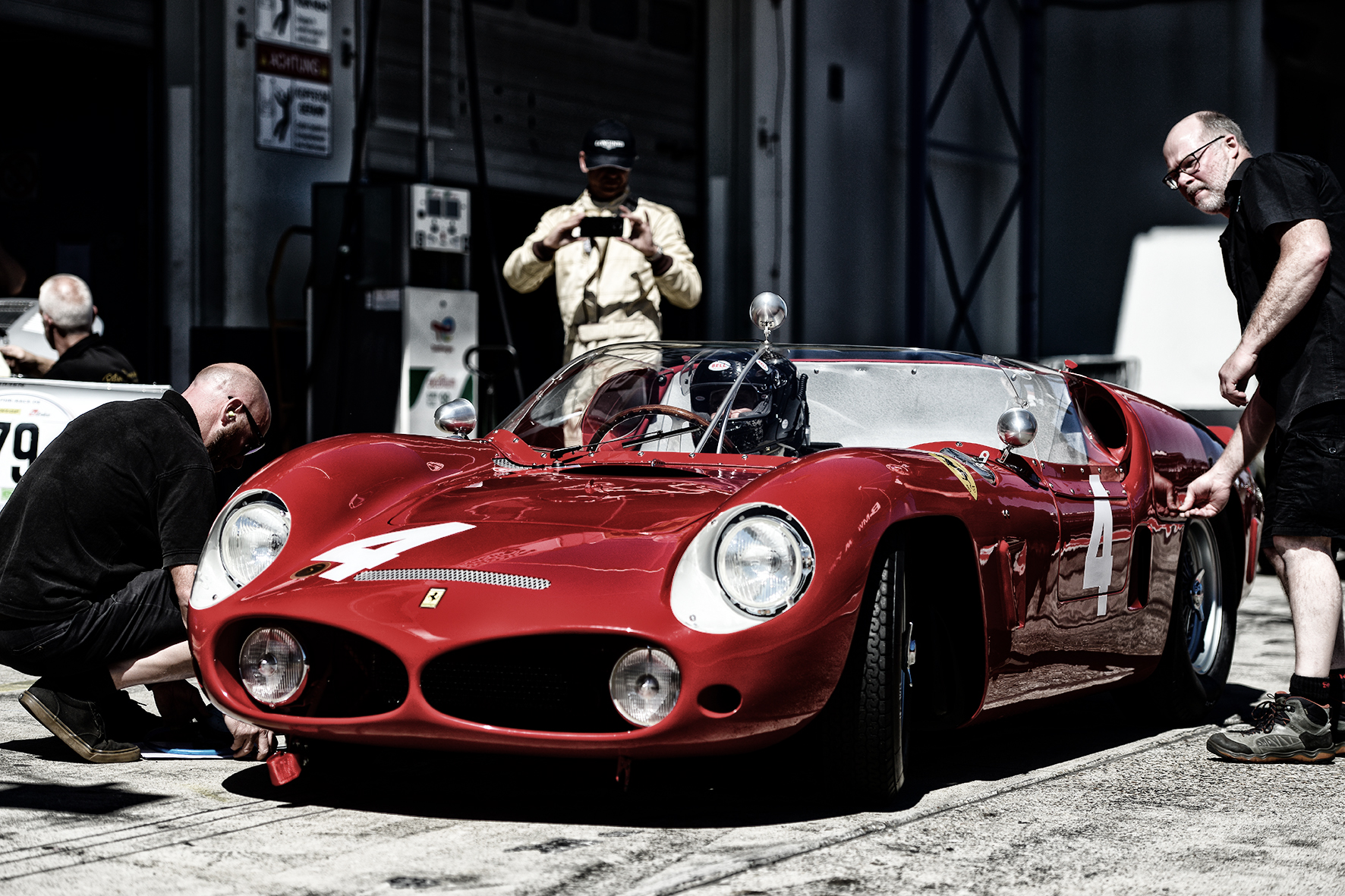The Ferrari 246 SP is a legendary racing car from the early 1960s that had a decisive influence on the motorsport history of Scuderia Ferrari. The Ferrari 246 SP is considered one of Ferrari’s first mid-engined prototypes and marked the beginning of a new era for the Scuderia Ferrari, which until then had favoured the front-engined concept. The 246 SP is remarkable not only for its innovative technology, but also for its success on racetracks around the world.

The Ferrari 246SP was presented at a special press conference in 1961 and was a direct response to the developments of rival brands such as Porsche and Cooper, which had already developed and fielded racing cars with a mid-engine layout. As innovative as the Scuderia Ferrari was in the 1950s, they had ignored the trend towards mid-engined racing cars, despite the enormous advantages this concept obviously had. The much better weight distribution had an immediate positive effect on handling and the performance of the racing cars increased rapidly, especially on winding race tracks.
The ‘SP’ in the name of the Ferrari 246 SP stands for ‘Sport Prototype’, which emphasises its classification as a prototype. With its mid-engine layout, the 246 SP heralded a new era that changed the Cavallino Rampante’s road and racing cars forever. The mid-engine concept had first been introduced in Formula 1 racing cars by the English ‘garagisti’, but then quickly found its way into sports cars.

Ferrari had to change, or rather completely redevelop, its Formula 1 and sports cars at the same time. An experimental mid-engined single-seater was built, which competed for the first time at the 1960 Monaco Grand Prix with a 2.4-litre V6, won the Formula 2 Solitude Grand Prix with a smaller 1.5-litre V6 and finished fifth (and first in the F2 class) at the Italian Grand Prix that year.
This racing car was the development basis for the new mid-engined Formula 1 racing car and the new mid-engined sports car. Its chassis was correspondingly similar to the Formula 1 car and was only minimally adapted to fullfill the two-seater layout of the regulations.
The chassis and engine were covered by an aerodynamic aluminium body developed by Carlo Chiti and his team. An aeronautical engineer by training, Chiti had a small wind tunnel installed in Maranello in the early days of aerodynamics. As a result, the 246 SP appeared with its characteristic ‘shark nose’, which was also found on the Formula 1 racing car, and a raised rear section.
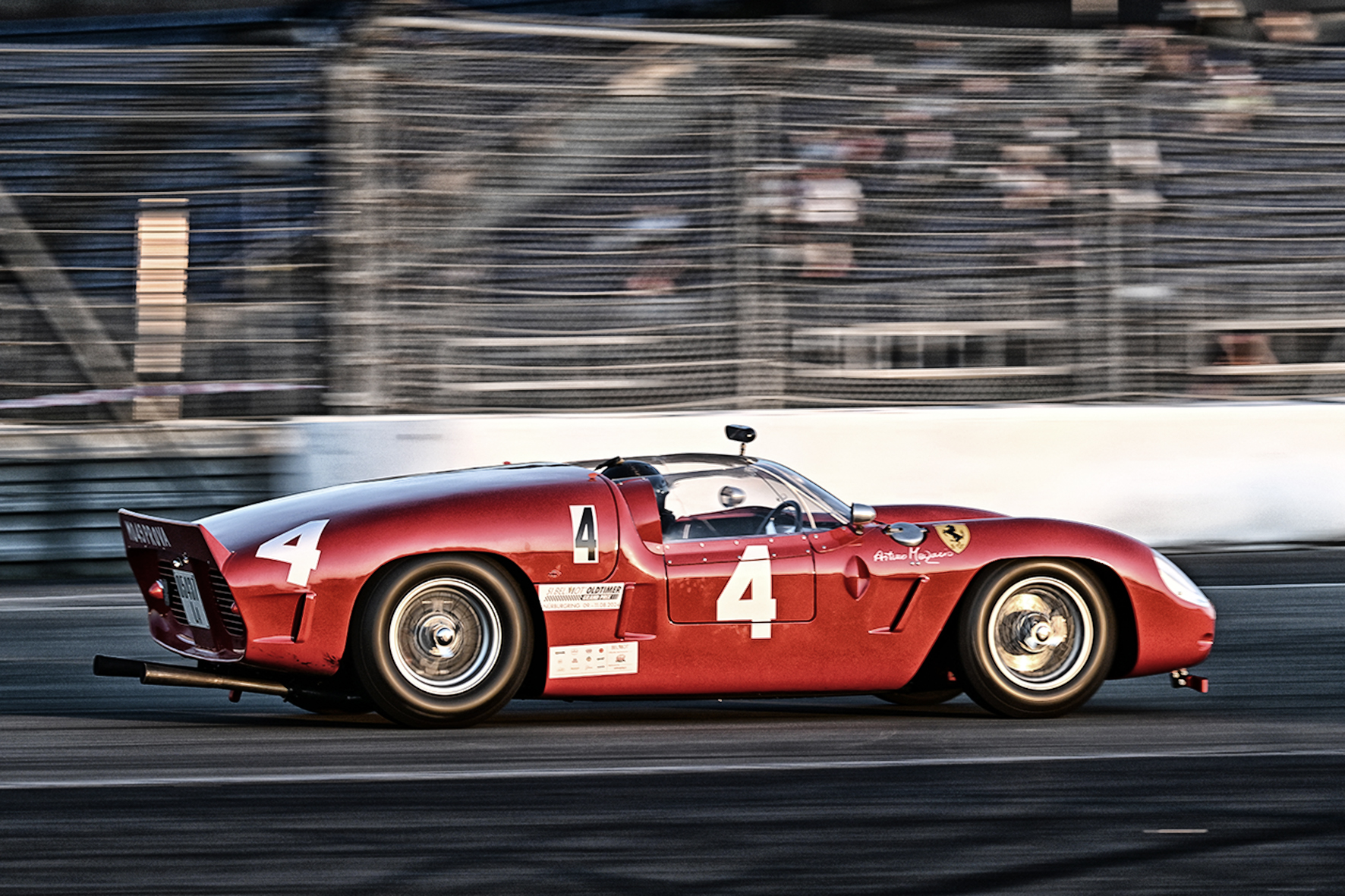
The combination of a mid-engined layout, a powerful engine and aerodynamic bodywork proved to be fantastic, but not immediately. During tests in Monza in March 1961, the car was slower in the bends than the Formula 1 car. Working with Richie Ginther, the team’s test driver – and also a qualified aeronautical engineer – Carlo Chiti began experimenting with different designs.
He and Ginther agreed on a spoiler across the width of the car. The height and position were precisely adjusted until the optimum position was found at the rear, which reduced both the lift and the drag of the vehicle. Some top speed was lost on the straights. However, this was compensated for by greater driving stability in the bends. This was a revolutionary idea at the time; aerodynamics were still in their infancy. Ferrari explained this design to reporters and other teams that it was intended to prevent petrol from running onto the hot exhaust when refuelling. Of course, the Scuderia did not want to reveal the real reasons and the positive aerodynamic effect and share them with the competition.
Towards the end of the same month, Ginther and his team-mate Wolfgang von Trips set a new lap record at the first race of the 1961 World Sports Car Championship in Sebring. After this very good debut in the USA, two 246 SPs appeared at the Targa Florio, where Wolfgang von Trips and Olivier Gendebien drove to the first significant victory for the mid-engined Ferrari. This should have convinced Enzo Ferrari of the mid-engine concept and its advantages.

In 1962, there was another victory for the 246 SP at the Targa Florio, as well as at the 1000-km race on the Nürburgring.
The 246SP was powered by a 2.4-litre V6 engine, which led to the designation 246, as was usual for Ferrari, and produced around 270 hp. The Ferrari 246 SP weighed just under 600 kg, which combined with its power output made for impressive performance. The 246 SP paved the way for Ferrari to develop further mid-engined sports cars, which became the dominant cars in the World Sports Car Championship in the following years.
It was a technical milestone for Ferrari and laid the foundations for the famous ‘P’ series that dominated sports car racing in the 1960s, including models such as the 250P and the 330P. The success of the 246SP impressively demonstrated to Scuderia Ferrari that the mid-engine concept was the future of motorsport and led to a reorientation of the vehicle strategy.
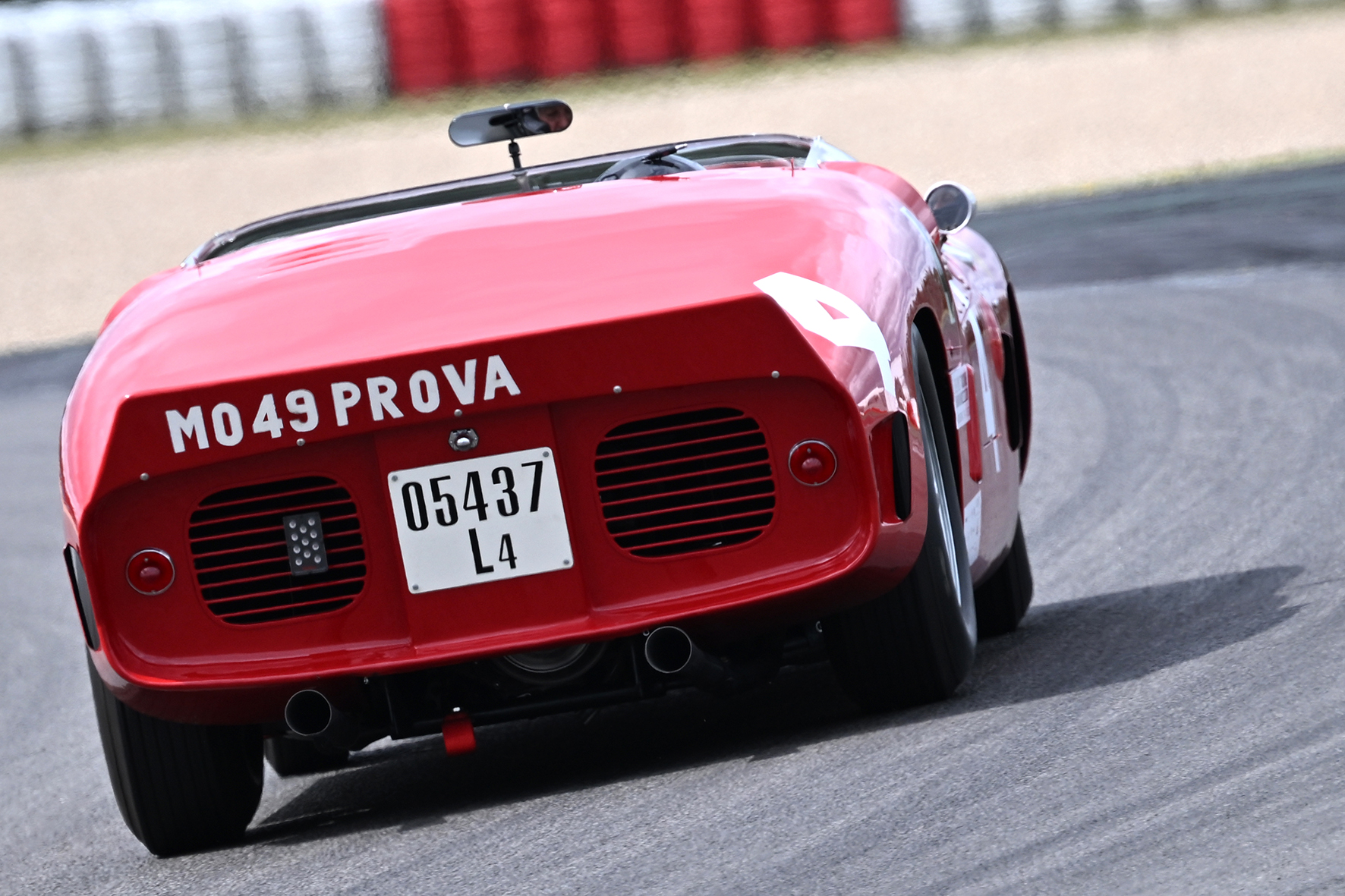
The Ferrari 246 SP shown here, which was driven by Jason Wright at the Oldtimer Grand Prix on the Nürburgring, is a replica with the original engine, at least that’s what was stated in the starter lists. Nevertheless, this Ferrari racing car is breathtaking from my point of view. The exterior shape is absolutely stunning for a racing car from that era and it is simply beautiful. The sound was just as great. The Ferrari 246 SP wasn’t the fastest during the race weekend, but for me it was the most spectacular. Find out more about our photographer Ralph Lüker.



